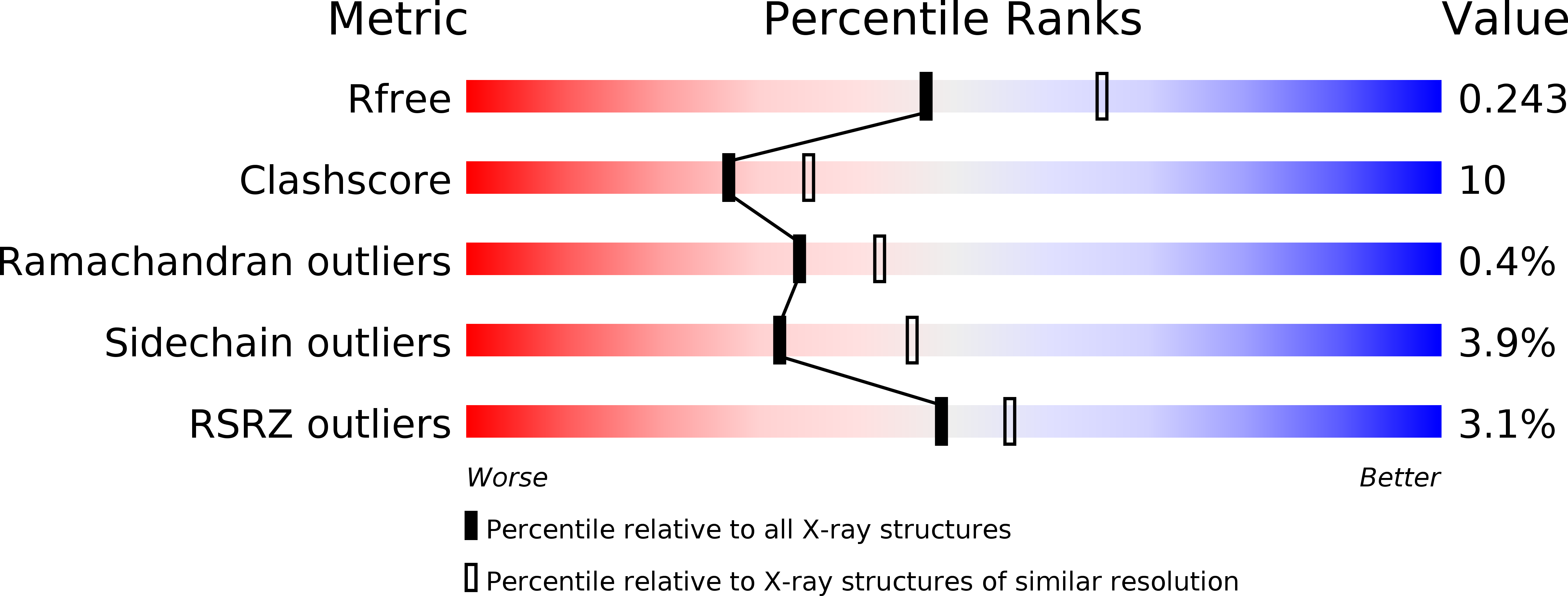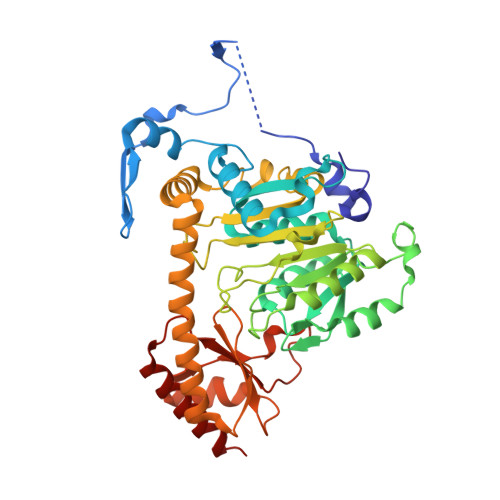Crystal Structure of Human Kynurenine Aminotransferase II, a Drug Target for the Treatment of Schizophrenia.
Rossi, F., Garavaglia, S., Montalbano, V., Walsh, M.A., Rizzi, M.(2008) J Biol Chem 283: 3559
- PubMed: 18056996
- DOI: https://doi.org/10.1074/jbc.M707925200
- Primary Citation of Related Structures:
2VGZ - PubMed Abstract:
Kynurenic acid is an endogenous neuroactive compound whose unbalancing is involved in the pathogenesis and progression of several neurological diseases. Kynurenic acid synthesis in the human brain is sustained by the catalytic activity of two kynurenine aminotransferases, hKAT I and hKAT II. A wealth of pharmacological data highlight hKAT II as a sensible target for the treatment of neuropathological conditions characterized by a kynurenic acid excess, such as schizophrenia and cognitive impairment. We have solved the structure of human KAT II by means of the single-wavelength anomalous dispersion method at 2.3-A resolution. Although closely resembling the classical aminotransferase fold, the hKAT II architecture displays unique features. Structural comparison with a prototypical aspartate aminotransferase reveals a novel antiparallel strand-loop-strand motif that forms an unprecedented intersubunit beta-sheet in the functional hKAT II dimer. Moreover, the N-terminal regions of hKAT II and aspartate aminotransferase appear to have converged to highly similar although 2-fold symmetry-related conformations, which fulfill the same functional role. A detailed structural comparison of hKAT I and hKAT II reveals a larger and more aliphatic character to the active site of hKAT II due to the absence of the aromatic cage involved in ligand binding in hKAT I. The observed structural differences could be exploited for the rational design of highly selective hKAT II inhibitors.
Organizational Affiliation:
DiSCAFF-INFM, University of Piemonte Orientale "A. Avogadro", 28100 Novara, Italy.
















